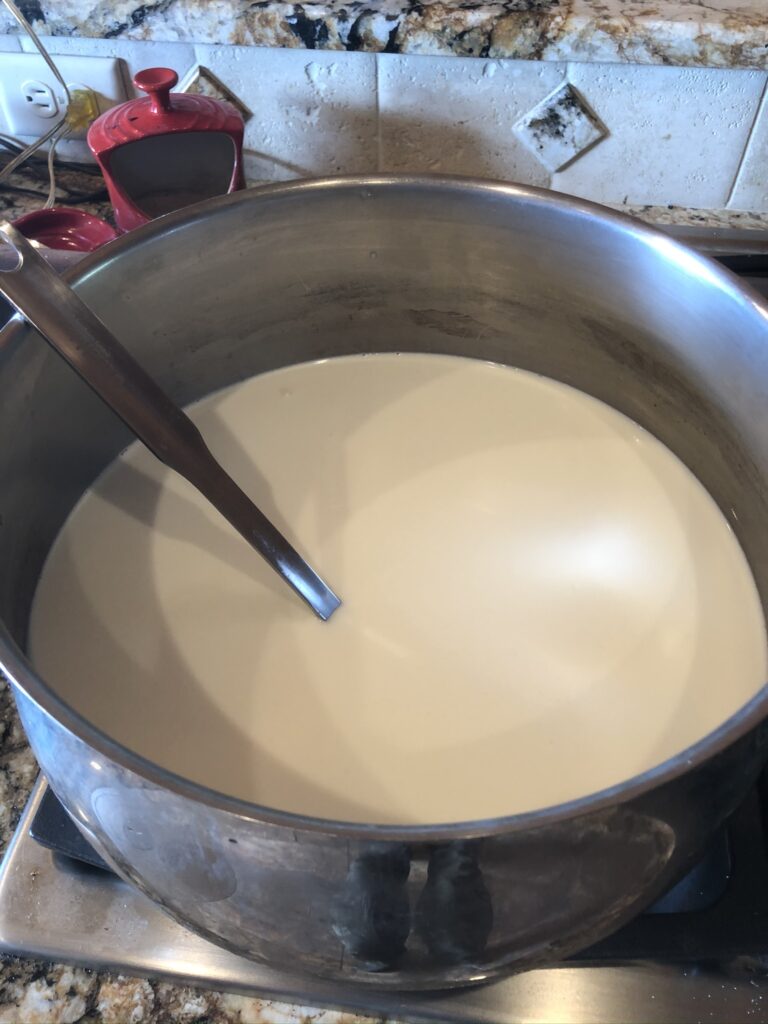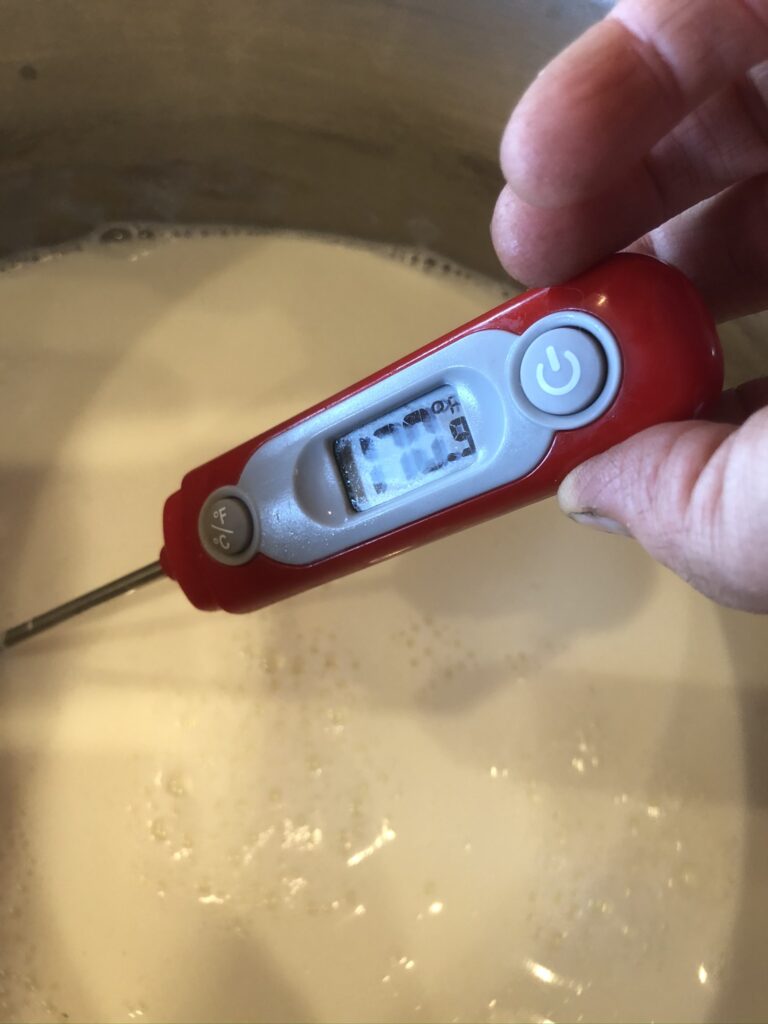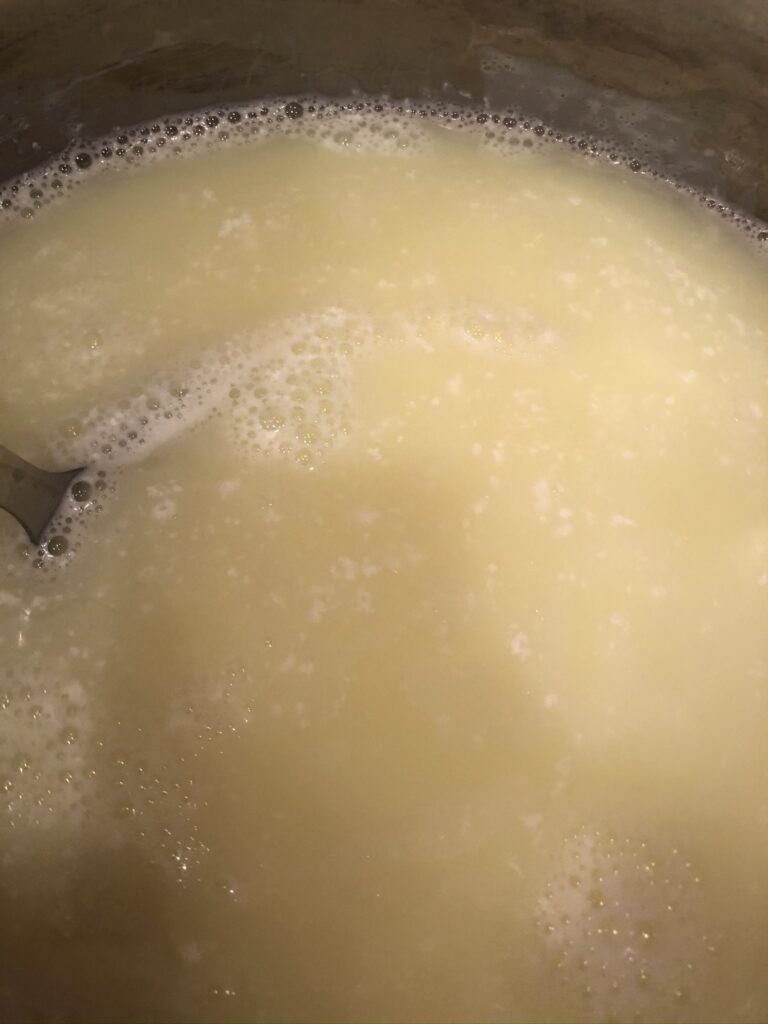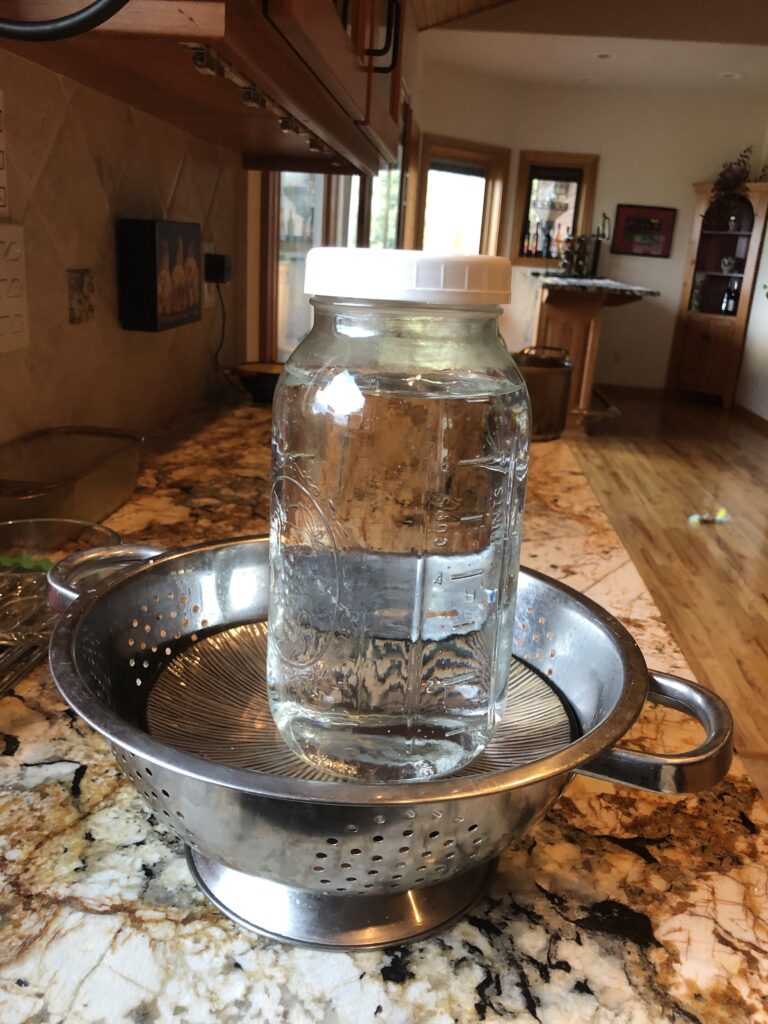
Paneer Cheese
I am convinced that great cheese making is as much an art as a science. I am new to cheese making and my efforts are more experimental than artistic. So, lets look at the science behind cheese making.
Goats milk consists of water, fats, proteins and sugars. In milk the primary proteins are casein and whey. The exact type of casein in milk is largely determined by the mammal producing the milk. For goats milk most casein is beta-casein.
The trick of making cheese of course is to make curds and separate them from the whey protein. Casein tends to want to clump together (the clumps are called micelles). The easiest way to promote the micelles clumping is to add acid (positively charged molecules) and heat! Both farmers cheese and paneer are simple cheeses that you can make with whole goats milk or whole cows milk, an acid (lemon juice or vinegar) and heat. Today we decided to make paneer cheese. Paneer is a soft cheese, unaged that originated in the Indian subcontinent. It is a non-melting cheese and is often eaten as a spread or in dishes such as palak paneer or saag paneer.
Paneer Cheese
Equipment:
- Heavy stockpan
- Slotted ladle or large spoon
- Kitchen thermometer
- Colander
- Cheesecloth
- Saucer
- Weight (I use half gallon jar filled with water)

Ingredients:
- 1 gallon whole milk
- ½ cup lemon juice (can use white vinegar)
- Salt to taste
Preparation:
- Pour milk into a heavy stock pan and heat the milk on medium-low to medium heat. Heat the milk to a minimum of 170 degrees F but do not bring it to a boil. Turn off heat and add lemon juice – not curds will begin to form instantly. Mix well with a slotted spoon.
- Add salt to taste and let set undisturbed for 45 minutes.
- Line a colander with cheese cloth and drain the whey (liquid) from the curds – you can do this into the sink or if you plan to use the whey over a bowl.
- Squeeze out excess water and wrap in fresh cheese cloth. Press curds into shape that fits into your colander then place a saucer on top of it with a weight.
- Leave cheese out overnight or for at least 8 hours.
- Cut the dried paneer into cubes for storage. It is recommended that it be stored in the refrigerator and used within a few weeks.




Note: you can add any herbs or seasoning after the curds have been separated.
